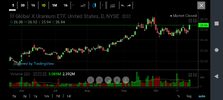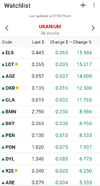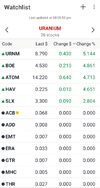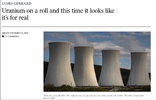Sean K
Moderator
- Joined
- 21 April 2006
- Posts
- 22,725
- Reactions
- 12,474
at 12:09Barlow .... shares why the team is "very bullish on uranium", as well as three future-facing themes Soul Patts has identified as areas of long-term opportunity
Renewables look like they failed as a solution then?
Seems the world might have caught on.RE is not the sole solution, which was pretty obvious from the start. Without FF, regulated, dispatchable storage is the key. Turning so much energy on and off at a whim is not like flicking a switch at the wall.
Seems the world might have caught on.
EVs seem to be on the nose as well at the moment.
Neither nuclear nor renewable energy have failed but likewise neither offers a total solution.Renewables look like they failed as a solution then?

The green dream of 100% Renewables always seemed like an expensive pipe dream to me.Neither nuclear nor renewable energy have failed but likewise neither offers a total solution.
Both are here to stay.
Statistics vary slightly by source but at the global level at present, about 9% of electricity is produced from nuclear, 30% from renewables and 61% from fossil fuels.
Nuclear isn't disappearing but nor are renewables, both are here to stay. Which is "best" being mostly a function of location, climate and population density.
Neither nuclear nor renewable energy have failed but likewise neither offers a total solution.
Both are here to stay.
Statistics vary slightly by source but at the global level at present, about 9% of electricity is produced from nuclear, 30% from renewables and 61% from fossil fuels.
Nuclear isn't disappearing but nor are renewables, both are here to stay. Which is "best" being mostly a function of location, climate and population density.




Everything last night pointing at another run up today.
One could have been in on pretty much any 308 stock at open today and still scored at least half of today's ill gotten gain.
Even the ETF's ran ~5% (ATOM & URNM)
US charts first. (Both up 4+%)
View attachment 165073
View attachment 165074
On our market, I don't see a single one in the red today, in my list anyway.
View attachment 165075
View attachment 165076
only a part of the solution , part of the problem is increased technology use also increases energy use ( and trying to replace tried and proven sources at break-neck speed )Renewables look like they failed as a solution then?
Phosphate/fertiliser.Makes me think more deeply about the next unloved commodity that no one is investing
Phosphate/fertiliser.
All those rockets and bombs are gunna use a lot.
Plus, everyone likes to eat.
I'm stuck on AEV for that...
Yeah, narh, tell that to Germany now.Neither nuclear nor renewable energy have failed but likewise neither offers a total solution.
Both are here to stay.
Statistics vary slightly by source but at the global level at present, about 9% of electricity is produced from nuclear, 30% from renewables and 61% from fossil fuels.
Nuclear isn't disappearing but nor are renewables, both are here to stay. Which is "best" being mostly a function of location, climate and population density.

Hello and welcome to Aussie Stock Forums!
To gain full access you must register. Registration is free and takes only a few seconds to complete.
Already a member? Log in here.